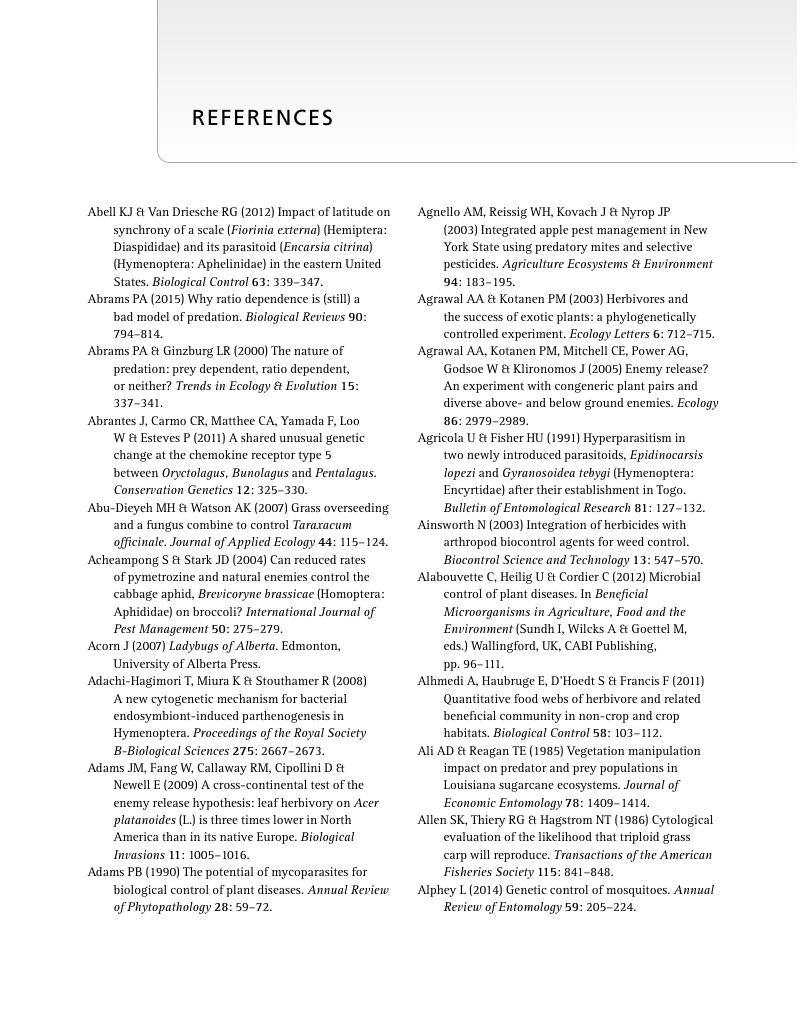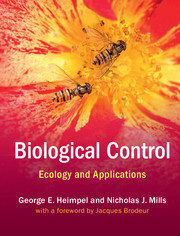Book contents
- Biological ControlEcology and Applications
- Biological Control
- Copyright page
- Dedication
- Contents
- Foreword
- Preface & Acknowledgments
- 1 Definitions and Interactions
- I Biological Control as Intentional Invasions
- II Dynamics of Biological Control
- III Local Facilitation of Biological Control
- References
- Index
- References
References
Published online by Cambridge University Press: 20 April 2017
- Biological ControlEcology and Applications
- Biological Control
- Copyright page
- Dedication
- Contents
- Foreword
- Preface & Acknowledgments
- 1 Definitions and Interactions
- I Biological Control as Intentional Invasions
- II Dynamics of Biological Control
- III Local Facilitation of Biological Control
- References
- Index
- References
Summary

- Type
- Chapter
- Information
- Biological ControlEcology and Applications, pp. 269 - 365Publisher: Cambridge University PressPrint publication year: 2017



